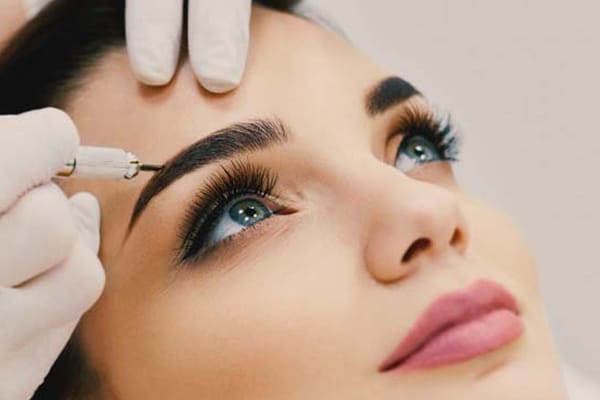Cosmetic is synonymous to women and we say this because billions of dollars are being spent by women on cosmetic tattoo Perth to increase their beauty quotient. Cosmetics are an indispensable part of a woman’s life – the love for beauty-enhancing elements cuts across all strata of society. In my effort to dig into the cosmetic history and unearth the love affair between women and cosmetics, I came across many interesting facts that I wish to share with all my readers.
Delving into the history of the use of cosmetics, we know that the Egyptians were the ones who started it all (sometime around the 4th century BC). There are historical evidences of the Egyptians using eye paints, scented oils and even animal fat based creams. These cosmetics were used by the women of the upper class in order to enhance the beauty of their facial skin and even treat skin problem like wrinkles, stretch marks, scars, hair growth etc. This brings us to an interesting conclusion i.e. there has not been any major shift in the purpose behind the usage of cosmetics.
The Western part of the world was a late entrant into cosmetic history and the use of cosmetics and it all started during the middle ages. Here too cosmetics were an elite affair and the commoners were bereft of this luxury. The use of cosmetics was not taken in a very positive way by the Church and it ultimately banned its use. Queen Victoria extended her support for the Church’s position. Thus cosmetics found its new lovers in the brothels where it adorned the faces of prostitutes. An interesting twist to the story came with Hitler declaring that cosmetics were better suited for the faces of Clowns and women belonging to the master race should shun its use.
The next two hundred years witnessed a rapid growth in cosmetic usage and even women belonging to the lower strata of the society started to use cosmetic products. The 18th century was very significant in terms of the changes in technology for the production of cosmetics. The French started to use new methods, chemicals and natural ingredients. Safer chemicals like zinc oxide were being used as the base and the use of lead or copper was abolished. At the end of the 19th century, the first beauty salons were set up.
Rapid use of makeup cosmetics started from the early 1930s; actresses and theater artists started to use make up in their films. Sarah Bernhardt and Jean Harlow spearheaded the so-called cosmetic movement and made the use of cosmetics fashionable. After World War II, there was rapid growth in the cosmetic industry where more and more women started using cosmetics. Soon with the introduction of electronic media like TV and Radio, cosmetics became a part of every woman’s life.
To date the significance of cosmetics has not reduced, but in fact, increased in the life of women. It is now over a 50 billion dollar industry. However, as its history evolves, cosmetics will take on new meaning. Past cosmetic history focused on women’s beauty and the culture of anti-aging. The future will focus on the dangers inherent in the continued use of synthetically formulated cosmetic products. These synthetic chemicals have proven to be toxic in nature, and over time, clinical studies will prove them to be hazardous to one’ health. Many of these toxins have already been linked to cancer, birth defects, infertility, liver and kidney malfunctions, and much, much more.
Recently, a lecture was presented by the Environmental Working Group, the EWG. Their mission is to protect children from the effects of toxic chemicals in the food, water, air, and products we use daily. Without getting into too much detail here is a summary of the findings of the EWG as it relates to cosmetic products.
Women, on average, use 12 personal care products daily that expose them to 160 toxic chemicals; 10 babies, still in their mother’s womb, were tested for chemicals in their bloodstreams with these results; 287 toxic chemicals were found of which 134 were linked to cancer; 151 were linked to birth defects; 186 were linked to infertility; 130 were linked to the immune system, and so on.
Now, if one questions what this all means, consider the following statistics; there has been an 84% increase in Acute Lymphocytic Leukemia in children from 1975 to 2002; a 57% increase in brain cancer during the same period; a doubling of Hypospadias (birth defect of the urethra in males) in infant males in the same period; sperm counts in men are dropping at a rate of 1% per year; 1 in 8 women will get breast cancer; 1 in 3 women will experience some form of cancer in their lifetime; 1 in 2 males will experience some form of cancer in their lifetime.
That is enough statistics to give you pause in the cosmetic products used daily. Past and future articles will delve deeper into this subject. For now, historically, we have presented the two sides of cosmetic history. The past emphasized the beauty aspects of personal care products, while the future should and hopefully focus on the dangers inherent in the daily use of toxic-laden cosmetic products.


